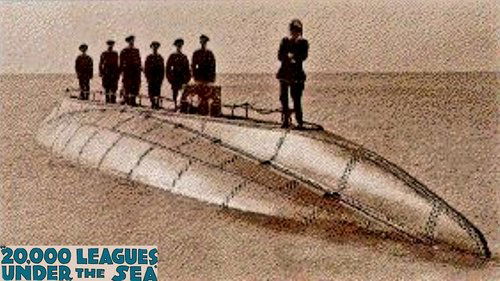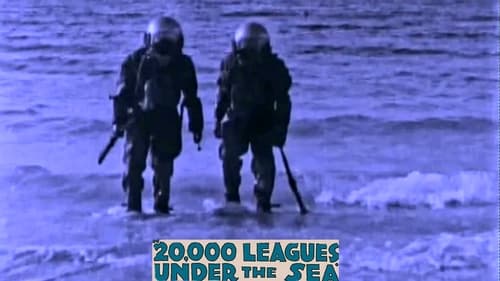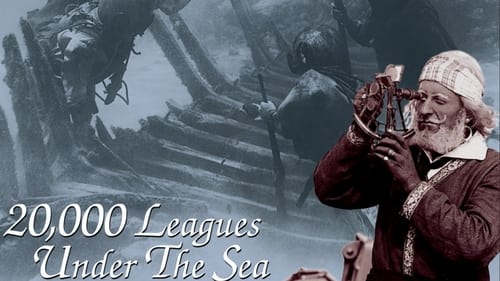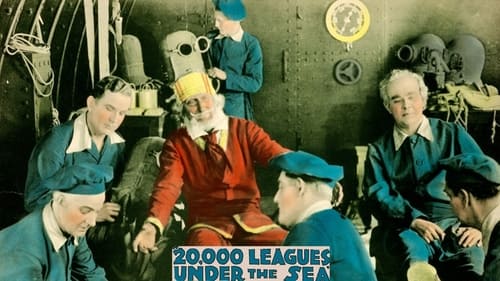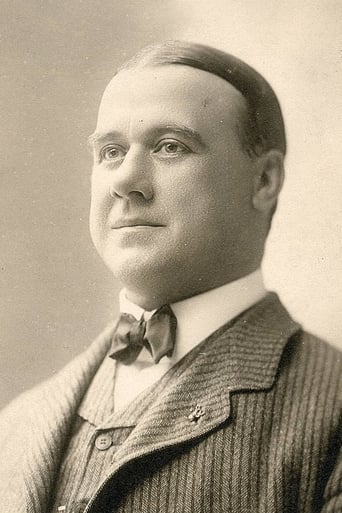MamaGravity
good back-story, and good acting
ShangLuda
Admirable film.
ThedevilChoose
When a movie has you begging for it to end not even half way through it's pure crap. We've all seen this movie and this characters millions of times, nothing new in it. Don't waste your time.
StyleSk8r
At first rather annoying in its heavy emphasis on reenactments, this movie ultimately proves fascinating, simply because the complicated, highly dramatic tale it tells still almost defies belief.
Matt Melchert
It's fun to watch an old silent movie and imagine what it must have been like for people watching it back then. In this case, we have what must have been a blockbuster of the first water (pun intended). It includes a lot--and I mean a LOT--of underwater filming, which apparently hadn't been done before. In this way, millions of people would have gotten their first look at a world they'd never seen before. For the Nautilus they used a real submarine, which compared to later depictions is pretty basic but still must have had a strong impact at the time.The plot was a reasonably faithful version of the original book, though as usual they took a few liberties. This movie included a back story of where Nemo came from and why he chose the life he leads. As in the original book, Nemo is a Muslim from the Indian subcontinent--something many other film adaptations didn't seem to have the guts to do.The characters of Nemo and the princess are well and sympathetically portrayed. As you'll have with the silent medium, personality and feelings can be efficiently portrayed with a mere expression or gesture. The princess in particular is established as a charming and lovable character, the kind you could fall in love with and want to take care of the rest of your life. When one of the castaways tries to force himself on her, we find ourselves hating the loathsome blackguard and cheering when he gets his just deserts.So in general, when viewed through contemporary eyes we have a cracking good story with good character development, along with some revolutionary effects in the underwater photography. A masterpiece! But when seen through modern eyes...oh, dear. Inevitably, there are facets of the film that have not aged at all well. The interminable underwater scenes, though they must have been mind-blowing at the time, slow the pace badly, and compared to what we see every day on TV and the Internet the images are very blurry and indistinct. And, although they portrayed Nemo and the princess as Indian Muslims, they clearly used Western actors in black-face, which tends to wrinkle noses these days.And Nemo's costume! His coat of indeterminate colour with its white boarder, along with his obviously fake white beard, makes him look like Santa Claus in black-face. Surely they could have done better, even at the time? There are a few silent movies that have stood the test of time and can be appreciated by modern audiences--The Battleship Potempkin comes to mind--but this is not one of them. I would not, for example, try to show it to small children as they would be bored out of their skulls. Still, if you're one of those lucky people who is able to project themselves into the past and see an old movie through the eyes of the time, it's well worth a look.I really wanted to give this movie two ratings: a 10 for what it achieved at the time, and, say, a 3 for it's overall objective quality, but they don't let you. So, I gave it a 9, which is honest.
Richard Chatten
A remarkably lavish production that seems not content with merely filming Jules Verne's 1870 novel but for good measure also throws in his later novel 'L'Île Mystérieuse' and a concluding flashback that - as the subtitles themselves admit - owes nothing to Verne but must have made an already expensive production needlessly extravagant (Universal's Carl Laemmle took a bath - if you'll pardon the expression - on the reported $500,000 he spent on it).The most remarkable aspect of the film is the pioneering underwater photography supervised by the brothers Ernest & George Williamson (some of it shot in the Bahamas) depicting the view from Captain Nemo's famous picture window, the camera lingering lovingly on strikingly modern-looking actuality footage of coral reefs and shoals of fish. When Nemo's crew get into their diving suits there is then remarkable footage of them interacting with actual sharks; although the realism abruptly evaporates in a later scene involving an extremely phony looking octopus.The film's makers quickly lose interest in a straight adaptation of Verne's novel at this point, and the action transfers to a mysterious desert island whose one human inhabitant is initially a boisterous 'child of nature' played by Jane Gail in dusky body makeup, who jauntily trades in her cheetah skin sarong for a fetching combination of blouse and trousers provided by one of the visitors. (Quite a few adventure films from this period that I've seen have put the leading lady in trousers.) Nemo, alias Daaker, turns out to have been an Indian prince in a previous life, and Miss Gail turns out to be his daughter, as is explained in a flashback thrown in climaxing in a native uprising. The film had at this point seemed to be drawing to its conclusion; which makes the insertion of this very expensive looking sequence reportedly featuring almost 2,000 extras all the more bewildering.The extraordinary underwater footage aside, the handsome and atmospheric look of the rest of the film probably owes more to the photography of Eugene Gaudio (whose elder brother Tony's long career at Warner Bros. included 'The Adventures of Robin Hood') than to the rather perfunctory direction of Stuart Paton, who should have told Allen Holubar as Nemo and the unidentified actress playing his late wife not to wave their arms around so much. Other reviewers have commented on the resemblance of the uniform worn by Captain Nemo and his crew to the one traditionally worn by Santa Claus.
Cineanalyst
This screen adaptation of Jules Verne's novel seems to have been timely. Two recent innovations changed the story's relevancy. The film was released in 1916, when German U-Boats were showing the effectiveness of submarines in war, including the sinking of the Lusitania. Verne's science fiction had only recently become more fully realized. Additionally, deep sea travelling was to be exploited by science. Indeed, some of the best sequences in this film are just of fish and sharks in the marine gardens as the characters look through Captain Nemo's magic window. Another invention, the motion-picture underwater photography by the Williamson brothers allowed for Verne's fiction to be more fittingly portrayed with cinema. Certainly, this was a remarkable effect for the art form in 1916, and I think the underwater scenes remain the best parts of this film, with the exception of the cheesy octopus attack.Above water, the plot is plodding and confused. Unfortunately, the filmmakers tried to combine Verne's "Twenty Thousand Leagues Under the Sea" with his sequel to it, "The Mysterious Island". Consequently, through most of the photoplay, there are two parallel narratives loosely and convolutedly connected. Nemo is also transformed into a dark-skinned Muslim and his vengeful mission is changed, and a lengthy and foolish epilogue is added to make sense of the hodgepodge. The science-fiction parts faithful to the title novel are superior to and mix poorly with the added-on exoticism. In addition, the acting is dated. On the other hand, the shots of fish, sharks, the submarine and the diving suits are straightforward and retain interest especially due to the age and precedence.
MartinHafer
Had this film been made a decade or so later, I would never have scored this film a 9. However, this score is relative to the other types of films being made in the 1916 time period--and for this, the film is rather amazing. While today we take so much of the film's innovations for granted, the film had some incredible underwater scenes--something people of the age would have seen here for the first time. It also featured some exciting submarine scenes--again, quite the innovation for 1916.The story follows Jules Verne's book pretty closely at the beginning. However, later in the film, the story goes off in some rather strange directions--making Nemo a Muslim who is seeking vengeance, the character of the daughter, the missing octopus/squid attack and the ending--all very different from the story. However, at a little over an hour and a half long and filled with great special effects, this is a film well worth seeking if you, too, love silent films.The movie, incidentally, is in the public domain so it can be downloaded from various sources for free. However, the copy is only average--the biggest problem being that the intertitle cards are occasionally clipped at the edge.Oh, and when you watch the film, see if you, too, think that in this film Nemo looks a bit like Santa--really!
